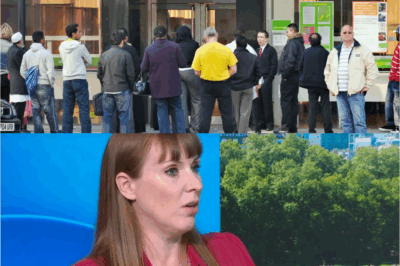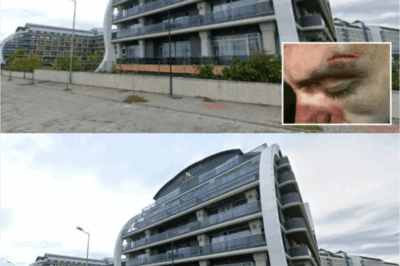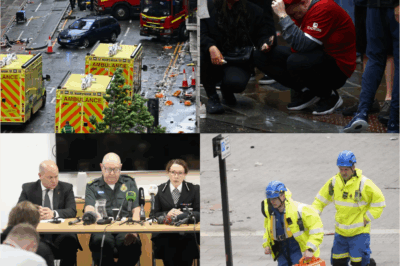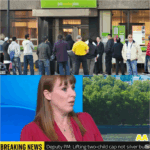The idea has been dismissed several times due to astronomical costs and technical hurdles

Tech billionaire Elon Musk has hinted at a groundbreaking innovation: a transatlantic underground tunnel connecting two major cities, London and New York. Discussions about the project, which could reduce travel time between the two cities to just 54 minutes, have been ongoing.
Musk has claimed that his company, The Boring Company, could build the tunnel for $20 billion. This concept, which has been in discussion for decades, involves constructing a vast tunnel beneath the Atlantic Ocean, spanning over 3,000 miles (4,800 kilometers).
While the project has traditionally been considered impractical due to its massive cost, technical difficulties, and engineering demands, Musk’s innovative approach and technological advancements have sparked renewed global interest in this groundbreaking infrastructure venture.
In a recent discussion, Musk stated that The Boring Company could complete the project for a fraction of previous cost estimates, which had once reached around $19.8 trillion. “We can rethink how we build and scale infrastructure,” Musk said, emphasizing the role of innovative tunneling techniques, automation, and cost-effective materials in driving down expenses.
At the core of Musk’s proposal is Hyperloop technology, a cutting-edge transportation system that uses vacuum-sealed tunnels and magnetic levitation (maglev) to propel pods at speeds exceeding 3,000 mph. This could significantly reduce travel time and transform intercontinental travel.
While Musk’s transatlantic tunnel vision has generated excitement, experts remain cautious about its feasibility due to significant challenges. These include overcoming technical obstacles like oceanic pressure, seismic risks, and harsh underwater conditions. The estimated $20 billion cost is seen as overly optimistic, with concerns about funding. Additionally, Hyperloop technology, central to the project, is still experimental and untested on such a large scale. Environmental impact, including disruptions to marine ecosystems and construction-related carbon emissions, requires thorough assessment. Lastly, coordinating a project of this magnitude across governments and international agencies poses substantial regulatory hurdles.
That’s a fascinating concept! Here’s an article exploring the idea based on Elon Musk’s past ventures and public enthusiasm for high-speed transportation. Please note: While no official $20 billion NYC-to-London tunnel has been confirmed, this piece is written as a speculative and imaginative take on what such a project could look like, inspired by Musk’s known interests in hyperloop, tunneling, and transportation innovation.
Elon Musk is once again turning heads with a bold vision that defies current engineering norms and pushes the boundaries of global transportation. In a recent discussion with investors and tech insiders, Musk hinted at his most audacious concept yet: a $20 billion ultra-high-speed tunnel connecting New York City to London, capable of transporting passengers between the two major cities in just 54 minutes.
While still in the conceptual phase, the project is said to blend Musk’s tunneling ambitions—spearheaded by The Boring Company—with high-speed transport technology inspired by the hyperloop and vacuum maglev systems. Musk’s claim, though initially met with skepticism, has ignited excitement across the engineering world, with many wondering: could this really be the next giant leap in travel?
At the heart of the idea is a transatlantic vacuum tunnel stretching nearly 3,500 miles beneath the ocean floor. Within this sealed tunnel, passenger pods would travel in near-vacuum conditions, virtually eliminating air resistance and dramatically increasing achievable speeds. Musk suggests the pods could reach speeds exceeding 4,000 miles per hour—nearly five times the speed of sound—thanks to electromagnetic propulsion and magnetic levitation.
The technology concept draws from his previous work on the hyperloop, a high-speed ground transport system that Musk originally proposed in 2013. However, while the hyperloop is designed for land-based routes, this tunnel would involve advanced underwater tunneling techniques. The Boring Company, which has already completed test tunnels in Las Vegas and is eyeing larger infrastructure projects in major cities, would serve as the driving force behind this monumental endeavor.
According to Musk, travel inside the pod would be not only lightning-fast but also safe and luxurious. The passenger capsules, which resemble a cross between a futuristic train car and a private jet cabin, would be fully enclosed, climate-controlled, and equipped with personal entertainment systems. Noise and vibration would be minimal due to the vacuum environment and advanced suspension systems. “It would be more relaxing than flying—and about ten times faster,” Musk reportedly claimed.
One of the major engineering challenges Musk acknowledged is constructing and maintaining a tunnel of such scale beneath the Atlantic Ocean. Traditional tunnel boring machines wouldn’t suffice, and new underwater excavation and pressurization methods would need to be invented. Moreover, environmental concerns, such as oceanic disruption and the effects of long-term vacuum operation, would need thorough study and approval from global regulators.
Despite the technical and political obstacles, Musk is no stranger to attempting the impossible. He has previously defied critics by building reusable rockets with SpaceX and mass-producing electric vehicles with Tesla when many doubted the feasibility of either. His track record of delivering on visionary projects gives some weight to this concept, even if it remains theoretical at this point.
From an economic perspective, a $20 billion price tag may sound outrageous, but Musk insists it’s feasible. He argues that traditional infrastructure projects are often bloated with inefficiencies and that using advanced AI-driven design, modular construction techniques, and recycled materials could reduce costs. Furthermore, he envisions the tunnel eventually paying for itself through high-volume passenger traffic and licensing agreements with global transport partners.
The social and economic implications of such a tunnel would be profound. Commuting between NYC and London could become a daily reality for high-level executives, diplomats, and even adventurous tourists. The business, tourism, and cultural exchange between the U.S. and Europe would surge. Imagine breakfast in Manhattan, lunch in London, and dinner back in New York—all in a single day.
Musk also hinted at possible extensions to Paris, Frankfurt, and even Tokyo, creating a web of high-speed transit tunnels connecting the world’s major cities. This vision aligns with his long-standing goal of building a global infrastructure network that reduces humanity’s reliance on fossil fuels and shortens travel time drastically.
Naturally, the idea has drawn criticism from skeptics and experts who point out the vast technical, legal, and environmental hurdles. Transatlantic air travel is already well established and improving in terms of sustainability and efficiency. Some argue that focusing on improving current air travel systems would yield better short-term benefits. Others raise concerns about the tunnel’s vulnerability to natural disasters or geopolitical instability.
However, Musk has always thrived on skepticism. He once said, “When something is important enough, you do it even if the odds are not in your favor.” For him, audacious goals are not to be feared but pursued relentlessly, even if they begin as seemingly impossible ideas. Whether this tunnel becomes a reality or not, its very proposal pushes the envelope and encourages innovation in an industry that often plays it safe.
Governments on both sides of the Atlantic have yet to comment officially, but anonymous sources claim that preliminary discussions have begun regarding potential feasibility studies. Private investors and sovereign wealth funds are said to be watching closely, waiting to see if this becomes more than just a futuristic pitch.
Even if the tunnel never materializes in Musk’s lifetime, it could lay the conceptual groundwork for future generations. Much like early visions of moon travel inspired Apollo, this idea may galvanize young engineers, scientists, and architects to dream bigger, question limits, and innovate boldly.
Elon Musk’s proposed $20 billion transatlantic tunnel is more than just an engineering fantasy—it’s a challenge to our collective imagination. Whether the world is ready to meet that challenge remains to be seen. But if history has taught us anything about Musk, it’s that he rarely stops at simply imagining the future—he builds it.
News
“BANKRUPT BRITAIN?!” – Labour’s Plan to WATER DOWN Its Already Flimsy Welfare Reforms Could HURL the UK Into TOTAL FINANCIAL MELTDOWN
LABOUR is making a complete mess of welfare. Panicked and driven Left-wards by Reform’s surge, the Government is wobbling on the…
“TURKISH HOTEL TERROR!” – Brit Dad Brutally BEATEN TWICE in Front of His Kids… Family Holiday Spirals into a Living Nightmare
The alleged attackers reportedly had a feared reputation A DAD-OF-TWO said he was attacked twice in front of his kids…
“FED to PIRANHAS!” – 31-Year-Old Mum of 3 Vanishes After Ex’s Savage Revenge… Body Still Missing in Brazil
A MAN was caught on CCTV putting his former wife’s body in the boot of a car before coldly dumping…
“Dinner Party of DEATH!” – You Won’t Believe Erin Patterson’s Gross Confession After Her ‘Killer’ Mushroom Meal Claimed 3 Lives
MUSHROOM cook Erin Patterson who is accused of killing three people with a poisoned beef wellington graphically described how she…
HOLIDAY BLOODBATH! Teen SLASHED to Death with Broken Bottle in Lisbon—UK Tourist (27) DRAGGED Back to Portugal in Dramatic Midnight Extradition
Daniel was reportedly attacked while trying to defend a friend A BRITISH tourist has been arrested and extradited to Portugal…
LIVERPOOL PARADE CARNAGE! 53-Year-Old Driver PLOUGHS into Crowd—47 Injured, 4 Kids Hurt—Police Shout “NOT TERROR!” Fans in SHOCK
Emergency crews arrived to find people lying injured in the road and some trapped under the car FOUR children were…
End of content
No more pages to load












